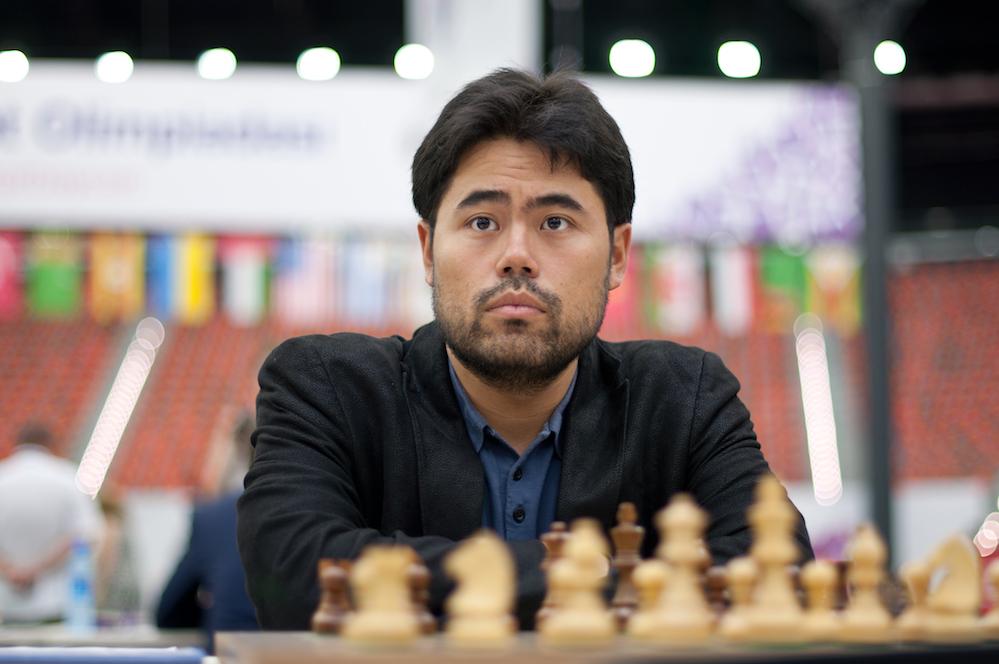
Follow Hikaru Nakamura's Advice
As the saying goes, a talented person is talented in everything. Therefore I wasn't really surprised when I saw Hikaru Nakamura's tweet about making a killing in the stock market.
$LULU with the big miss as my puts go deep into the money, and I won in the first round of the US Championship! #GreatDay
— Hikaru Nakamura (@GMHikaru) March 29, 2017
It looks like people from the financial circles took note as well. I guess his short tweet from March 27...
We all knew low volatility couldn't last forever under Trump. $VIX $XIV $VXX
— Hikaru Nakamura (@GMHikaru) March 27, 2017
...possibly started speculation that the mysterious trader "50 cent" who bets on the rise of volatility and therefore already has spent over 200 million dollars on volatility options ($VIX) is actually Hikaru Nakamura!
Regardless if you are a Wall Street shark or a chess player, Hikaru's recent interview for Bloomberg is a must-watch. There he makes a connection between chess and financial markets.

I think everyone can find something interesting in this interview. I was really intrigued when Nakamura said "if something goes wrong in chess you are trying to cut your losses. Find a way to salvage whatever is happening to the position. Even if you are much worse you try to do everything you can to not lose. The same principle is applied to trading, as well."
At first I was completely puzzled by this statement, which is basically an oxymoron! Let me explain. In financial terms, "cut your losses" actually means to accept your losses! The biggest sin a trader can commit is to keep holding a losing position, desperately hoping that fortune will turn. When you "cut your losses," you close the sinking position, register a loss of money and deploy the remaining capital somewhere else.
Trying to deny a loss and do everything you can to avoid the loss is the surest way to lose everything!
As an experienced options trader, Nakamura definitely knows what he is talking about, so what did he mean then? Later in the interview Hikaru mentions that you need to know when to take a risk and when you shouldn't. That's what makes a difference between weak chess players and strong chess players, according to Nakamura.

I guess now I understand what he meant. Let me give you an example that demonstrates his point.
Black has clearly lost the fight on the queenside. Even though he can still try to defend, the prospects are pretty bleak there. Therefore Nakamura decides to use the well-known maxim: cut your losses and let your winners run. In this particular position it means that he simply abandons his queenside to save the energy of his pieces (cut your losses) and concentrates on his attack on the opposite side of the board (let your winners run!).
Nakamura's approach is extremely risky as he is going to give up a lot of material, but remember, he said that the ability to make calculated risk makes the difference between a strong player and a weak player! Can you continue the attack like Hikaru Nakamura?
Of course "Big Al" Beliavsky didn't fall into this simple trap. Instead he blocked the dangerous Bc8 and probably thought that with an extra rook he would be able to survive the attack, but Nakamura found another beautiful tactical shot. Can you spot it?
Even though GM Beliavsky managed to avoid the trap again, he lost his material advantage and Black's attack quickly decided the game:
This sharp variation of the King's Indian Defense suits Nakamura's philosophy of cutting losses and letting the winners run. Look at the following games where he beat a bunch of super grandmasters. In all of them he accepted that the fight on the queenside was lost and therefore he lashed out at the kingside.
It shouldn't come as a big surprise that this extremely volatile opening variation scores pretty well for Nakamura, since option buyers love volatility. My guess is when Hikaru switches from buying options to selling options, we'll see a lot of classical Queen's Gambit in his games.
Meanwhile, I recommend you listen to Nakamura's advice.
When you are losing a fight on one part of the board, rather than continue the uphill battle there, switch to the part of the board where you are stronger and try to gain an advantage.
Cut your loses and let your winners run!



